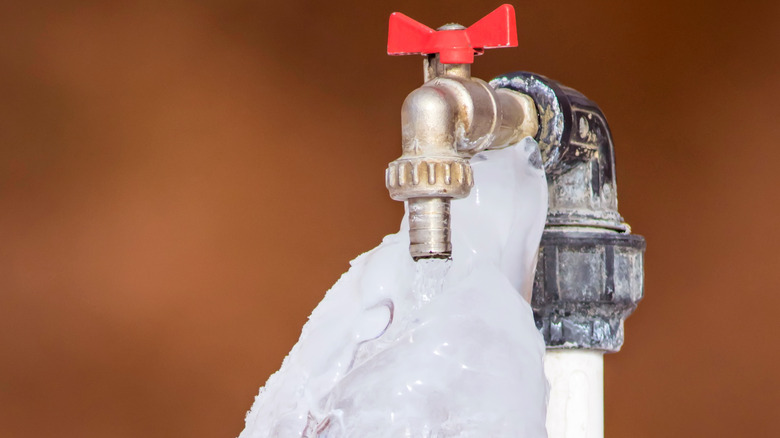Ways to Protect Pipes from Freezing: Specialist Advice
ExploreIn this article underneath you can discover some decent content about How to prepare your home plumbing for winter weather.

Cold weather can wreak havoc on your plumbing, particularly by freezing pipes. Below's how to avoid it from taking place and what to do if it does.
Intro
As temperatures decline, the risk of icy pipes boosts, possibly causing costly repairs and water damages. Comprehending just how to stop icy pipes is critical for home owners in cold environments.
Understanding Frozen Pipelines
What causes pipes to ice up?
Pipelines freeze when subjected to temperature levels listed below 32 ° F (0 ° C) for extended periods. As water inside the pipelines ices up, it increases, putting pressure on the pipe walls and possibly triggering them to break.
Threats and problems
Icy pipelines can cause water interruptions, home damage, and pricey repair work. Ruptured pipes can flood homes and trigger extensive architectural damages.
Indications of Frozen Pipeline
Determining frozen pipes early can avoid them from rupturing.
Just how to identify frozen pipes
Try to find lowered water circulation from faucets, unusual odors or sounds from pipes, and noticeable frost on subjected pipelines.
Prevention Tips
Insulating at risk pipelines
Cover pipes in insulation sleeves or utilize warmth tape to secure them from freezing temperature levels. Concentrate on pipes in unheated or external locations of the home.
Home heating methods
Maintain interior areas appropriately warmed, specifically areas with plumbing. Open up closet doors to allow warm air to circulate around pipelines under sinks.
Safeguarding Exterior Pipes
Garden hose pipes and outside taps
Detach and drain pipes garden hose pipes prior to winter. Mount frost-proof spigots or cover outdoor faucets with shielded caps.
What to Do If Your Pipelines Freeze
Immediate actions to take
If you suspect icy pipelines, maintain taps open to alleviate pressure as the ice thaws. Make use of a hairdryer or towels soaked in hot water to thaw pipes slowly.
Long-Term Solutions
Structural modifications
Take into consideration rerouting pipes away from exterior wall surfaces or unheated areas. Include additional insulation to attic rooms, basements, and crawl spaces.
Updating insulation
Invest in high-quality insulation for pipes, attic rooms, and walls. Appropriate insulation aids preserve regular temperatures and minimizes the threat of frozen pipes.
Final thought
Preventing frozen pipes needs positive actions and fast responses. By understanding the causes, indications, and preventive measures, house owners can secure their pipes throughout winter.
5 Ways to Prevent Frozen Pipes
Drain Outdoor Faucets and Disconnect Hoses
First, close the shut-off valve that controls the flow of water in the pipe to your outdoor faucet. Then, head outside to disconnect and drain your hose and open the outdoor faucet to allow the water to completely drain out of the line. Turn off the faucet when done. Finally, head back to the shut-off valve and drain the remaining water inside the pipe into a bucket or container. Additionally, if you have a home irrigation system, you should consider hiring an expert to clear the system of water each year.
Insulate Pipes
One of the best and most cost-effective methods for preventing frozen water pipes is to wrap your pipes with insulation. This is especially important for areas in your home that aren’t exposed to heat, such as an attic. We suggest using foam sleeves, which can typically be found at your local hardware store.
Keep Heat Running at 65
Your pipes are located inside your walls, and the temperature there is much colder than the rest of the house. To prevent your pipes from freezing, The Insurance Information Institute suggests that you keep your home heated to at least 65 degrees, even when traveling. You may want to invest in smart devices that can keep an eye on the temperature in your home while you’re away.
Leave Water Dripping
Moving water — even a small trickle — can prevent ice from forming inside your pipes. When freezing temps are imminent, start a drip of water from all faucets that serve exposed pipes. Leaving a few faucets running will also help relieve pressure inside the pipes and help prevent a rupture if the water inside freezes.
Open Cupboard Doors
Warm your kitchen and bathroom pipes by opening cupboards and vanities. You should also leave your interior doors ajar to help warm air circulate evenly throughout your home.

I was brought to that editorial about Helpful Tips to Prevent Frozen Pipes this Winter through an associate on our other website. If you please take the opportunity to distribute this article if you enjoyed it. Many thanks for going through it.
Click On This Link